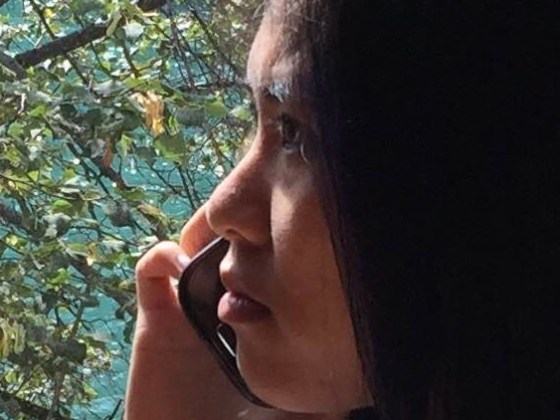By training, most reporters are not designers, programmers or landscapers, but walk into any digital newsroom today and you’ll see writers doing mockups on InDesign and tweaking code in the CMS.
Now journalists might become architects of fully-immersive, virtual reality experiences that take audiences straight to the scene.
Gannett Digital and The Des Moines Register shared their summer experience in the ONA panel “Virtual Reality Storytelling” on Friday.
In the Midway, they also demonstrated their Harvest of Change project working with Oculus Rift, a virtual reality headset priced at $350.
Through the narrative of four farm families, three journalists reported on the effects climate change brings to the agriculture business.
The team collaborated with 3D artists to render the Dammann farm – located in Page County, Iowa – and recreate the environment in a virtual reality experience to tell the story through videos and data visualization.
Once on the Dammann farm, users can walk around and interact with the different elements of the story — interviews, informational videos and aerials of the farm.
To get the proportions and distance of everything as accurate as possible, the team sported GoPro cameras and Google Glass for first-person perspective walk-throughs.
According to the company, the project took about three months from May through July and cost under $50,000. Gannett says audiences have been responding well to the story.
Dan Pacheco, the journalism innovation chair at S.I. Newhouse School of Public Communications, came on board this summer as Gannett Digital’s innovator in residence to work on the project. There is huge potential for virtual reality experiences even outside journalism, he says.
“When the next great Lexus car comes out or some kind of hybrid or even Tesla, these brands can begin to stop telling people about how cool their cars are. They’re going to say, ‘Jump inside. Take it for a virtual test drive.’ People will do that,” Pacheco said.
Anthony DeBarros, director of interactive applications at Gannett Digital, thinks virtual reality is a natural next step for storytelling.
“I think as journalists we always want to be sure we’re not being left out of a medium,” DeBarros said. “It’s really just the very beginning of this medium, but we wanted to start to see what are they possibilities and how do we tell stories in a non-linear way using this.”
One frequently asked question the team receives is why they chose to focus on “a desolate farm.”
DeBarros shared what their virtual reality producer responded to a reporter: “For this first project, we could have gone to a rodeo. We could have gone to Mardi Gras. We could have gone to the end zone of a NFL game and done something that would be spectacular at that kind of level.”
“But again, we brought this back down to local journalism, which is where ultimately within our company it’s going to have to live and where it’s going to really grow up from,” DeBarros said.
Though exciting, experiments need, well, experimenting. It’s too early to tell how newsrooms will begin to incorporate virtual reality storytelling in their reporting. They may follow the template of The Register, or they may not go there at all.
It all depends on the kind of story outlets want to tell, and, as always, just because a tool is new and shiny doesn’t mean it’s the right tool.
If you plan on taking the plunge, here are some tips from Pacheco on how to get started:
- Download Unity3D. It’s a free, open-source software you can use to build your virtual environments. Available for Macs and PCs.
- Don’t think about it as something you have to do with Oculus Rift. Start with the 2D experience, which you can still embed onto webpages.
- Consider more accessible and affordable options, like the Google Cardboard app, for a bite-size virtual reality experience on your smartphone.
- Visit https://bitly.com/vrstorytelling for notes from the Friday session with Dan Pacheco.
- If you missed Gannett at the Midway, you can still explore the story in 2D with their download.






